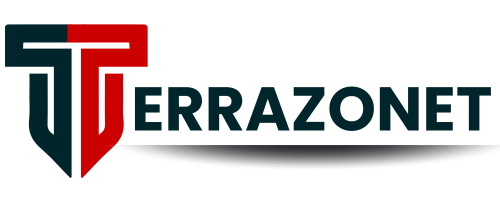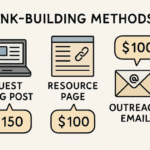Picture this: You’re weeks from launching a revolutionary portable medical monitor. Prototypes work flawlessly… until one fails in field testing. The culprit? A hairline fracture in a circuit board flexing during routine use. Or imagine your breakthrough 5G small cell module suffering crippling signal loss at peak frequencies. Suddenly, that critical choice of a PCB manufacturer in USA isn’t just about zip codes; it’s about securing the specialized expertise to transform your complex electronic vision into rugged, reliable reality. As US innovation surges in AI, robotics, next-gen comms, and medical tech, the humble PCB has evolved from a simple interconnect into the sophisticated, often highly specialized, nervous system of your product. Getting it wrong isn’t an option.
Why Partnering with a US-Focused PCB Manufacturer Matters (Even Globally)
Let’s be real: proximity has perks. Collaborating with a manufacturer attuned to the US market offers tangible advantages. Time zone alignment facilitates smoother communication for urgent design tweaks or project updates. There’s a strong perception (and often reality) of enhanced intellectual property (IP) protection under familiar legal frameworks. Logistics can be simpler for quick-turn prototypes or smaller batches, reducing lead times. Crucially, a partner deeply familiar with US regulatory landscapes (think FDA for medical, FCC for telecom, MIL specs for defense) and ingrained industry standards like IPC-6012 (rigid boards) or IPC-6013 (flexible circuits) speaks your compliance language from day one.
However… the global supply chain is just that – global. The most strategically advantageous PCB manufacturer in the USA for your specific project might not be the one closest to your HQ, especially when advanced technologies enter the equation. Locking yourself into a purely local option without the requisite niche capabilities can be a far greater risk than navigating international logistics with the right expert partner.
Beyond the Basics: When Your Project Demands Advanced PCB Solutions
Basic 2-4 layer rigid boards? Many shops can handle those. But when your design pushes boundaries – aiming for smaller, lighter, faster, more robust, or capable of surviving extreme environments – standard fabrication simply won’t cut it. This is where specialized expertise becomes non-negotiable.
- Conquering Complexity with Rigid-Flex PCBs: Think of rigid boards as sturdy plywood sheets, and rigid-flex as expert origami. They seamlessly integrate rigid sections (for component mounting) with flexible polyimide layers that bend and fold. Why it’s transformative: Enables incredibly compact 3D packaging (wearables, implants), eliminates failure-prone connectors (aerospace, robotics), enhances reliability in dynamic applications (rotating joints, folding mechanisms). The Expertise Hurdle: It’s hard. Designing for dynamic flex requires precise understanding of bend radii, material stresses, and layer stackup transitions. Manufacturing demands meticulous control over lamination, plating, and coverlay application to prevent delamination or cracking. Not every fab house has mastered this intricate dance. A partner experienced in rigid-flex understands the nuances of material selection (like Pyralux or Rogers flex materials), stackup design for reliability, and the critical IPC standards governing them.
- Mastering Signal Integrity with High-Frequency PCBs: When your signals scream into the GHz range (5G/6G, radar, satellite comms, high-speed computing), your PCB becomes an RF waveguide. Tiny imperfections wreak havoc. Why Material & Precision Rule: Standard FR-4 is lossy and unstable at high frequencies. Enter specialized laminates like Rogers RO4000 series, Taconic RF-35, or Isola Astra MT. These offer tightly controlled dielectric constants (Dk) and extremely low dissipation factors (Df). But material is just the start. Precise impedance control (think tuning a guitar string for perfect pitch) is paramount. Trace geometry, layer spacing, and even surface roughness must be engineered with micron-level precision. Manufacturing requires impeccable etching control, smooth copper surfaces, and stringent process controls to maintain consistent Dk/Df. Signal loss isn’t just a nuisance; it can kill your product’s performance. This demands a fabricator fluent in the language of GHz.
- Other Advanced Solutions in the Arsenal:
- HDI (High-Density Interconnect): Using microvias (laser-drilled holes smaller than 6 mils), buried/blind vias, and finer traces/spacing to pack immense functionality into tiny spaces (smartphones, miniaturized controllers).
- Heavy Copper PCBs: For high-power applications (power converters, motor drives) needing exceptional current carrying capacity and thermal management.
- Advanced SMT Assembly: Handling ultra-fine-pitch components (down to 0.3mm), complex BGAs, and demanding thermal profiles critical for miniaturized, high-reliability assemblies.
Key Industries Driving Demand for Advanced US PCBs
The push for these sophisticated boards isn’t abstract; it’s driven by concrete needs in high-stakes sectors:
- Telecommunications: 5G/6G infrastructure (massive MIMO antennas, mmWave modules), satellite communication systems, RF front-end modules. (Critical Tech: High-Frequency PCBs, HDI).
- Robotics & Automation: Industrial robotic arms (dynamic cabling), collaborative robots (Cobots – safe, compact design), Autonomous Guided Vehicles (AGVs – reliability in harsh environments). (Critical Tech: Rigid-Flex PCBs, HDI, Robust SMT Assembly).
- Medical Devices: Implantable devices (pacemakers, neurostimulators – ultra-reliable flex), diagnostic imaging equipment (high-speed data), portable monitors (miniaturization). (Critical Tech: Rigid-Flex, HDI, Biocompatible Materials, Highest Reliability Standards).
- Aerospace & Defense: Avionics (lightweight, reliable), radar systems (high-frequency, high-power), secure comms, satellite systems (extreme environments). (Critical Tech: High-Frequency, Rigid-Flex, Heavy Copper, Exotic Materials, Extreme Reliability).
Choosing Your PCB Partner: Expertise Trumps Proximity Alone
Selecting a PCB manufacturer in the USA based solely on location is like choosing a surgeon based on their office proximity. For complex, low-to-medium volume projects – the lifeblood of R&D and specialized industries – technical mastery is paramount. You need a partner whose capabilities align precisely with your project’s specific technological demands.
Critical Capabilities Checklist for Advanced PCB Manufacturing
| Capability | Why It Matters | Questions to Ask |
|---|---|---|
| Rigid-Flex Design Support | Ensures reliable dynamic bending, prevents layer delamination, optimizes stackup | “Can you review our stackup for bend areas? Show examples of dynamic flex applications you’ve produced?” |
| HF Material Options & Experience | Minimizes signal loss, ensures stable impedance at target frequencies | “Do you stock Rogers/Taconic/Isola laminates? Can you show impedance control data on similar HF builds?” |
| HDI Microvia Capability | Enables extreme miniaturization and complex routing | “What’s your minimum microvia size/laser drill capability? Show HDI layer count examples.” |
| Advanced SMT Assembly | Handles fine-pitch, BGAs, complex components reliably | “What’s your smallest component pitch handled? Describe your SPI/AOI processes for BGAs.” |
| IPC Standards Certifications | Guarantees adherence to quality/reliability benchmarks (e.g., IPC-6013 Class 3) | “Are you IPC-6012/6013 certified? What Class do you typically build to?” |
| DFM Analysis Rigor | Catches costly manufacturability issues before fabrication begins | “Describe your DFM process. How early can you review our files?” |
| Prototyping Speed | Accelerates R&D iteration and time-to-market | “What are realistic lead times for complex Rigid-Flex or HF prototypes?” |
| Scalability to Volume | Ensures consistent quality when moving from pilot runs to production | “How do you manage process control and quality assurance scaling up?” |
The Strategic Advantage of Global Partners like Global Well PCBA
For US innovators facing the challenge of sourcing highly specialized PCBs, casting a wider net is often the smartest play. This is where experienced global partners with deep expertise in advanced technologies become a powerful strategic asset. Consider a partner like Global Well PCBA – not just as a vendor, but as an extension of your engineering team focused precisely on the demanding niches where many domestic fabs may not venture deeply.
The value proposition for US companies is compelling:
- Deep Specialization: Focused expertise in exactly the advanced technologies driving US innovation: complex Rigid-Flex builds for medical and robotics, precision High-Frequency boards for 5G and radar, sophisticated HDI for miniaturization. They live and breathe these challenges daily.
- Cost-Effectiveness for Complexity: Achieving true cost efficiency on complex, low-to-medium volume builds requires specialized equipment and accumulated process knowledge. Global specialists often achieve this without compromising the stringent quality demanded by US clients.
- Proven Track Record with Demanding Clients: Experience serving global innovators, including US companies in telecom, medtech, and industrial automation, means understanding the performance, reliability, and documentation standards you require.
- True Turnkey Solution: Seamlessly integrating advanced PCB fabrication with equally sophisticated PCBA assembly (including complex SMT, through-hole, and box build) eliminates integration headaches and ensures quality control across the entire process.
- Commitment to Quality Parity: Adherence to strict IPC standards (like IPC-6013 Class 3 for flex), robust quality management systems (ISO 9001, often IATF 16949), and transparent reporting provide confidence that quality meets or exceeds US expectations.
- US-Aligned Communication: Dedicated English-language engineering and project management support, understanding of US technical requirements, and responsiveness during core US hours bridge the geographical gap effectively.
Future-Proofing Your Electronics: Trends to Watch
The demand for specialized PCBs isn’t slowing down. Miniaturization will push HDI further. Higher frequencies (6G, terahertz sensing) will demand even more exotic materials and tighter tolerances. The integration of passive and even active components within the PCB substrate (embedded components) is rising. Sustainability pressures will drive demand for greener laminates and processes. Partnering with a manufacturer that invests in R&D, tracks these trends, and has the agility to adopt new technologies is crucial for staying ahead.
Wrapping It Up: Expertise is Your True North
Finding the right PCB manufacturer in the USA for your ambitious project boils down to this: Prioritize deep, proven expertise in your specific advanced technology needs above all else. While local partners offer benefits, limiting your search geographically can mean compromising on the critical capabilities that make or break your product’s performance and reliability. For complex Rigid-Flex, mission-critical High-Frequency designs, or cutting-edge HDI, a strategically chosen global specialist with a laser focus on these technologies – like Global Well PCBA – often delivers unparalleled value: the right expertise, robust quality, and cost efficiency tailored to demanding, innovative applications.
Your Next Steps:
- Define Your Needs Precisely: Document your PCB’s core requirements – type (Rigid, Flex, Rigid-Flex), layer count, critical materials (HF laminates?), target frequencies, bend requirements, reliability class (IPC Class 2/3/3A?).
- Prioritize Proven Expertise: Filter potential partners based on demonstrable experience and success stories in your specific advanced technology (e.g., 10+ layer Rigid-Flex for medical devices, mmWave PCBs for 28GHz+).
- Scrutinize Capabilities & Certifications: Use the checklist. Demand evidence. Ask for data (impedance reports, reliability testing results). Verify IPC certifications relevant to your product.
- Engage Early for DFM: Involve your chosen partner in the design review phase. Their DFM feedback is invaluable in preventing costly redesigns and manufacturing delays.
- Evaluate the Total Value Proposition: Look beyond unit cost. Factor in expertise, quality assurance processes, reliability, communication efficiency, and the cost of not getting it right. Sometimes, the most cost-effective partner isn’t the cheapest initial quote.
What’s the biggest challenge you’ve faced finding the right PCB partner for a complex project? Was it sourcing specific materials, achieving reliability targets, or managing communication? Share your experiences below!
FAQs:
- Q: Can a Chinese PCB manufacturer really meet US quality standards?
- A: Absolutely, if they are a true specialist focused on advanced technologies and serving demanding global markets. Look for stringent adherence to IPC standards (verified by certification and reporting), robust quality management systems (ISO 9001, IATF 16949), investment in modern equipment, and transparent quality data sharing. Reputable specialists often exceed the capabilities of generalist domestic shops for complex builds.
- Q: What are the main advantages of Rigid-Flex PCBs over traditional rigid boards?
- A: Key advantages include: 3D Packaging Freedom (enables smaller, lighter products), Enhanced Reliability (eliminates connectors – a major failure point), Improved Signal Integrity (shorter signal paths, fewer interfaces), Dynamic Flex Capability (essential for moving parts), and Simplified Assembly (fewer interconnects to solder/assemble).
- Q: How critical is material selection for High-Frequency PCBs in 5G applications?
- A: It’s paramount. Standard FR-4 absorbs too much signal (high loss tangent) and has unstable electrical properties at mmWave frequencies. Materials like Rogers or Taconic offer low, stable dielectric constants and minimal signal loss, enabling precise impedance control and maintaining signal strength/purity critical for 5G performance. The wrong material renders the design ineffective.
- Q: What IPC standards should I look for in a PCB manufacturer for medical devices?
- A: IPC-6011 (Generic PCB Perf), IPC-6012 (Rigid PCBs), and crucially IPC-6013 (Flexible Circuits) are foundational. For high reliability, demand Class 3 (High Reliability Electronic Products) or Class 3A (includes Space Addendum) performance. ISO 13485 (Medical Devices QMS) certification of the manufacturer is also highly valuable.
- Q: How can I effectively manage communication and logistics with an overseas PCB partner?
- A: Choose a partner with dedicated US-facing support (English-speaking engineers/PMs), overlapping communication hours, and robust project management tools. Establish clear communication protocols. For logistics, partner with a manufacturer experienced in streamlined global shipping (DDP – Delivered Duty Paid can simplify things) and providing reliable lead time estimates. Build buffer time for initial runs.
- Q: What does “turnkey PCBA” actually include?
- A: A true turnkey partner manages the entire process seamlessly: Component Sourcing & Procurement (managing supply chain risks), Advanced PCB Fabrication, Complex SMT & Thru-Hole Assembly, Conformal Coating, Precise Testing (ICT, Flying Probe, Functional Test), and Final Integration/Box Build. You provide the design; you receive a tested, finished sub-assembly or product.
- Q: When does it make sense to consider HDI technology for my PCB?
- A: Consider HDI when you need to: Miniaturize significantly (smaller board size), Increase Component Density (more chips in less space), Route Complex BGAs (escape routing for fine-pitch devices), Improve Signal Integrity (shorter paths, fewer vias), or Reduce Layer Count (potentially lowering cost on complex designs). It’s common in smartphones, wearables, advanced medical devices, and high-performance computing.
YOU MAY ALSO LIKE: XAI770K: Cracking Open the AI Black Box & Building Trust in Machine Decisions



















